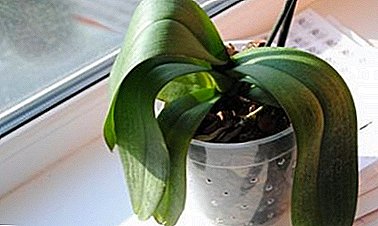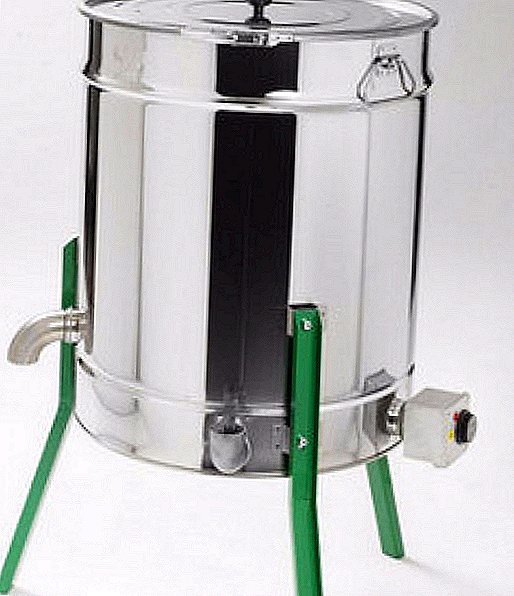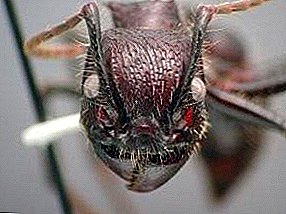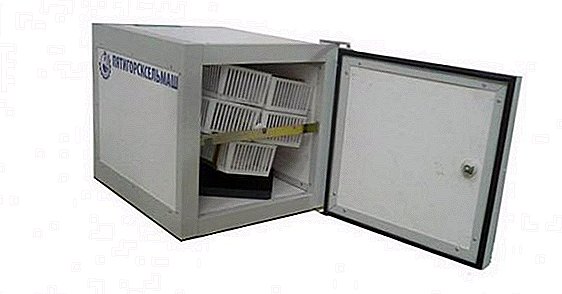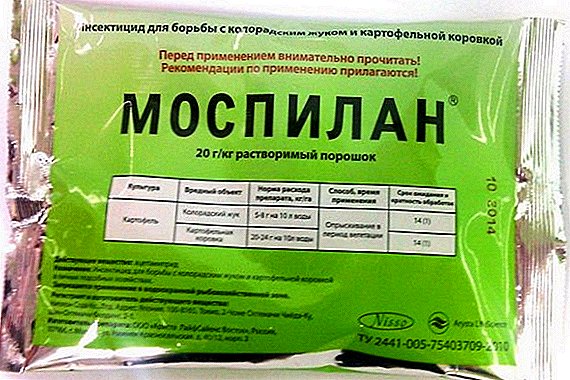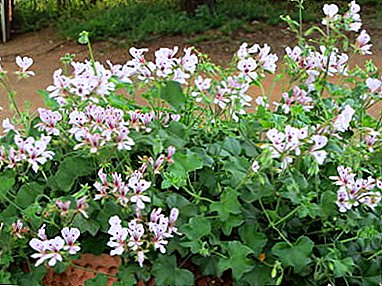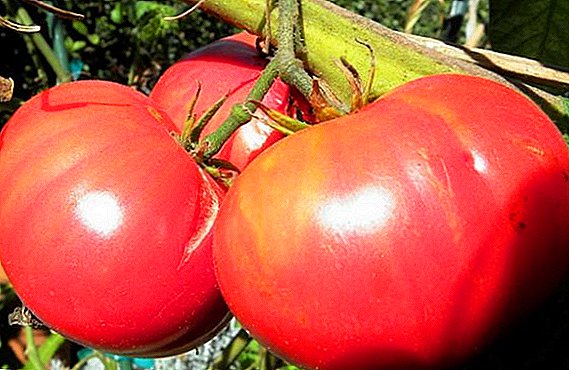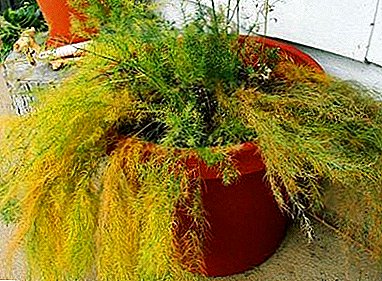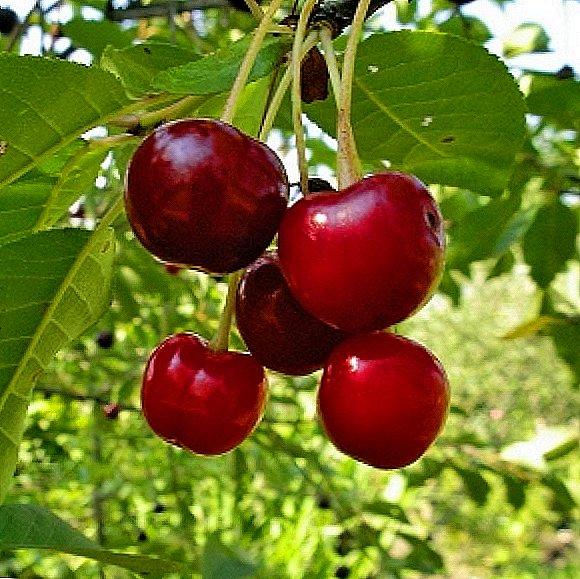
Summertime is the time when everything blooms and smells.
And the main thing is that you can try the fresh fruits of vegetables and fruits of your site.
Everyone loves to enjoy the goodies of their own garden.
Today we will be talking about a variety of Vladimirskaya cherry.
This culture is very common among gardeners.
Vladimirskaya Cherry - description of the variety from "a" to "z". Main positive and negative culture indicators

As mentioned earlier, this type of cherry is one of the oldest.
Long since this variety was propagated by seeds and cuttings, so nowadays there are numerous types and forms of this cherry.
Fruits of this class can be from 2.5 grams to 3.5 grams, which means that they can be of different sizes. Their shape is rounded, slightly compressed on the sides. The funnel of the fruit is small and cramped.
The skin of the fruit is almost black with a reddish tinge, and the flesh is maroon, juicy and dense. On the skin there are numerous gray dots.
Taste sweet cherry with a predominance of acidity.
Inside the fruit there is a brown stone weighing about 0.31 grams, it is well separated from the pulp.
The stem of a cherry comes off too well, its size is 30-43 mm, not thick. The pulp of this sort of cherry contains the following components: dry matter - 16.5%, sugar - 11%, ascorbic acid - 4.5 m / gram per 100 m / gram, free acids - 0.63%.
In grafted trees, fruiting begins already at 2 or 3 years of culture. From flowering plants to the final ripening of the fruits takes about 60-65 days, it falls on the month of July, according to these data, we see that the cherry is medium ripening. Fruits ripen non-simultaneous. Culture refers to the self-infertile.
The berries of this cherry are suitable for everything from making jams and compotes, before freezing and drying.
This sort of cherry grows as a bush.

The root system forms bushes with a height of 2.3 m to 5.1 m. If the culture is planted, then single-stemmed trees are formed.
The main trunk and branches are ashen - gray, uneven bark with oblong cracks. The crown in the form of a circle, over the years, acquires a large spreading, often crying, there are few leaves inside.
Skeletal branches are at an angle of 55-60 degrees. The branches of one-year age are yellow-brown in color; on their bases there is a silver patina. Buds in the shape of a cone, small size.
A distinctive feature of leaves is their complexity in the form of a boat. They are small, about 80 mm long and 40 mm wide, they do not shine, the tip is sharp, and the base begins as an oval. At the edges there is a double serration, the length of the petiole is 12–12 mm, of small thickness with anthocyanin pigmentation, there are 1-3 glands on the petioles.
In each inflorescence there are 5-7 flowers, in the form of a saucer with a divided double top. Petals in contact with each other. The snout and the anthers are on the same level, the cup is in the shape of a glass with anthocyanin coloration, the length of the pedicle is about 25 mm. More than 85% of the fruits are located on the annual branches.
The yield of this variety depends on the area in which it grows, as well as the weather. But basically it gives enough fruits about 25-30 kg from one tree. But in cold areas there can be only 5 kg.
What is the main benefits this cherry variety:
- The first thing to note is the high quality of the berries themselves, which are suitable for universal use.
- Relatively good yield of this variety.
- Not really in need of quivering care.
- A positive quality is the fact that many gardeners are very pleased with this cherry.
- The plus of this crop is sufficient sweetness of the fruit.
- Crohn's rounded shape, lush enough that will give your garden a beautiful view.
- Also, this culture has good winter hardiness.
- Well tolerates transportation over long distances.
disadvantages Vladimir cherry:
- It fights badly with various fungal diseases.
- It has a low frost resistance of generative kidneys.
- Needs additional pollinator varieties.
The main features of the care of the variety
In order to get good yields you need to care for your plants. Below we describe the pruning of cherry, watering and what fertilizers are needed.
What is pruning cherry?

Between some gardeners there are disputes whether or not to cut the cherry. Basically, they just do not know how to properly this process. Many of them make mistakes that can harm a tree.
But cutting a tree brings the following advantages:
- Culture is well and properly formed, the crown does not thicken, and the tree grows straight, not sideways.
- Productivity increases several times.
- Fruits are improved in taste and quality.
- Various diseases affect the treated culture much less.
- There is a slight rejuvenation of the tree, which reduces the aging process.
Consider the details of trimming cherries:
- After the second year of the tree’s life, the main task is not only the formation of the crown of the culture, but also to prevent the thickening of the tree. It is necessary to cut off extra branches and crown growing inside.
- On Vladimir cherry, which has a bush-like shape, very long shoots are removed.
- Each year it is necessary to cut dry and diseased branches.
- On the trunk, from time to time, you need to leave new skeletal branches, this is done to properly form the crown.
- Wounds received during pruning do not need to be treated, it will slow down the healing process.
When is it best to prune:
- Spring pruning is the most common. Begin the pruning process, until the movement of juice in the branches, around the end of March and early April.
- Summer pruning is carried out only when the culture is well developed.
- Autumn pruning is carried out for sanitary purposes.
- And winter pruning is contraindicated.
Fertilization for cherry and watering culture
The tree is fed with fertilizers in the fall, in order to have a good wintering.
It is also interesting to read about the variety of cherries "Youth"
What fertilizers make to obtain nutrients:
- It is very good to feed the tree in the autumn period with organic substances, such as: manure, sawdust and compost.
- If you do not have the above fertilizers, then various complex supplements that are suitable for fruit trees are suitable.
- Phosphate and potash fertilizers are applied when they dig up the soil around the tree.
- Ashes and phosphate fertilizers should be left for the spring period.
How to produce watering cherries?

Some gardeners often water the crop, which is a big mistake. With frequent irrigation, the ground is compacted, which reduces the oxygen content in it.
The less air in the soil, the worse the culture develops.
The first watering is done after the flowering of the tree. Second watering when the ovary begins to develop. The third, when it was already harvested from the cherry. And the fourth, in the third decade of October, is the final watering in a year.
On average, you need to use 4 or 9 buckets of water per season, depending on the age of the tree.
It is best to arrange circular furrows near the plant for irrigation. After establishing such a watering system, watering occurs evenly around the tree. Each watering uses up to 14 liters of water.
How to prepare cherries for the winter period?
Even if the cherry is highly resistant to winter cold, it still needs to be prepared for winter. To do this, in the autumn you need to warm the roots and trunk from frost well. To do this, we need a thick layer of snow, and top cover with sawdust or straw. It is also necessary to whiten a tree trunk, from exposure to sunlight, as well as various pests.
How to protect against pests?
Cherry trees very well attract various parasites from which it is necessary to protect it.
Consider the basic rules for the protection of this culture:
- In the autumn, when carrying out sanitary pruning of a tree, it is necessary to remove all the diseased branches, and cover up the places of cuts with garden pitch.
- Also with this pitch you need to lubricate all the places from which the gum flows.
- All pruned branches and fallen leaves must be burned so that the parasites do not develop.
- After the first frost, the trunk and the bush of the cherry must be sprayed with 5% urea - this is a nitrogenous fertilizer that kills all parasites, fungi and other pests.
Features of planting this culture

Planting Vladimir cherry carried out in the autumn and spring.
For planting you need to choose a place well lit by sunlight, as well as to keep the place lightweight.
The best land for planting is either loam or black earth.
When planting cherries, it is necessary to take into account the distance between the seedlings, which must be at least three meters. This culture is planted in a chessboard form of landing. The pit should be about 60 cm in size. The topmost layer of earth should be mixed with pus, ash and mineral fertilizers.
Before planting a plant you need to check its root system. If the seedling was transported for a long time, it should be soaked in water for 5 hours. After you have planted a sapling, you need to pour it with water. And the final stage is soil mulching.


